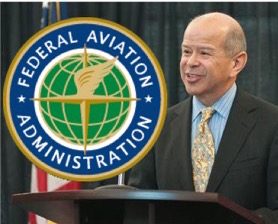 News and Commentary. The FAA has just released the 2017 Administrator’s Fact Book. The 27-page document provides metrics, statistics and information on everything from safety to staffing, and provides links to source documents and project descriptions. It’s a good resource for anyone interested in US aviation – and the statistics concerning drones provide some insight into the issues the drone industry faces and where it’s heading.
News and Commentary. The FAA has just released the 2017 Administrator’s Fact Book. The 27-page document provides metrics, statistics and information on everything from safety to staffing, and provides links to source documents and project descriptions. It’s a good resource for anyone interested in US aviation – and the statistics concerning drones provide some insight into the issues the drone industry faces and where it’s heading.
The document starts with safety statistics, and its clear why the issue of drones around airports has become a major factor in regulation. For an agency whose stated mission begins with safety, (“To provide the safest, most efficient aerospace system in the world,” says the Fact Book) the Safety “Incident” statistics are troubling. From 2012 to 2017, all categories of the incidents measured have increased. While it’s hard to see how drones can be blamed for “surface incidents” or “vehicle pedestrian deviations,” the industry clearly takes the brunt of the increase in “near mid-air collisions”: “Pilot-reported NMACs with Unmanned Aircraft Systems (UAS) now account for more than half of all reported events,” says the Fact Book.
Like any set of numbers, the Fact Book statistics don’t present a clear view. “Incidents” – sometimes poorly defined and poorly documented – went up. “Accidents,” not so much. “Fatalities” remain at 0. As a safety record, it’s still excellent – and millions of people are happy to fly the crowded U.S. airspace every day without concern. But the numbers are still a problem for the drone industry, because they are quoted over and over again by regulators and communities as representative of the danger that drones present.
The numbers on registrations – both hobbyist and commercial – also present a narrow viewpoint of the industry. While useful to determine trends (yes, the numbers are large and rising), registrations are self-selecting. The approximately 875,000 registered hobbyists represent only those operators who know about the program and chose to register even during the time period that registration has been voluntary. The 102,800 non-hobbyist drones registered presumably match the 70,043 Part 107s issued: but the black market of unlicensed operators is unrepresented. The numbers published represent, in some sense, a minimum: and they represent those operators who are not a safety problem.
Other data provides some information about commercial operators. Nearly 11,000 airspace authorizations granted demonstrate the high volume of requests. The LAANC program should go a long way towards streamlining the process when fully implemented, and the FAA has been working to introduce the technology as quickly as possible. The 1,208 Part 107 Waivers counted don’t indicate how many and what type of waivers have been requested, only those actually granted – but with over 70% of the waivers given for night operations, the numbers show what kind of operations most licensed operators are currently performing.
The Fact Book will no doubt provide a lot of slide presentation data for industry leaders – and for regulators. It shows what law abiding operators are doing currently, and what problems rogue drones are creating. But it’s up to the industry to ensure that humanitarian and economic benefit of drones become a significant part of the regulatory conversation.

Miriam McNabb is the Editor-in-Chief of DRONELIFE and CEO of JobForDrones, a professional drone services marketplace, and a fascinated observer of the emerging drone industry and the regulatory environment for drones. Miriam has penned over 3,000 articles focused on the commercial drone space and is an international speaker and recognized figure in the industry. Miriam has a degree from the University of Chicago and over 20 years of experience in high tech sales and marketing for new technologies.
For drone industry consulting or writing, Email Miriam.
TWITTER:@spaldingbarker
Subscribe to DroneLife here.







[…] News and Commentary. The FAA has just released the 2017 Administrator’s Fact Book. The 27-page document provides metrics, statistics and information on everything from safety to staffing, and provides links to source documents and project descriptions. It’s a good resource for anyone interested in US aviation – and the statistics concerning drones provide some insight […] The post What the Administrator’s Fact Book Says – and Doesn’t Say – About Drones in the US appeared fiSee Original Article […]